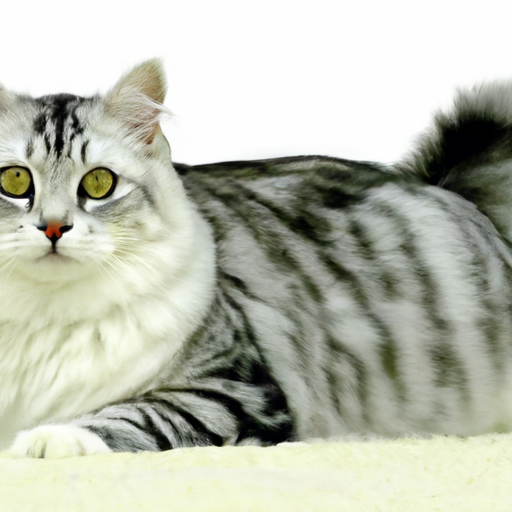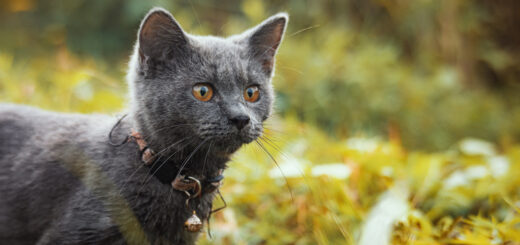Cat Socialization: Building Confidence And Positive Interactions
In the world of feline companions, building confidence and positive interactions is essential for a happy and well-adjusted cat. Whether you have a newly adopted rescue or a shy kitty, the process of cat socialization can make a world of difference in their behavior and overall well-being. By creating a safe and nurturing environment, gradually exposing them to new experiences, and using positive reinforcement techniques, you can help your feline friend blossom into a confident and sociable companion. This article explores the importance of cat socialization and provides practical tips to help you along the way.

This image is property of images.pexels.com.
Click here to Understand & Speak With Your Cat!
Why is Cat Socialization Important?
Helps prevent behavioral issues
Cat socialization plays a vital role in preventing behavioral issues in cats. When cats are properly socialized from an early age, they are more likely to develop healthy and positive behaviors. Socialization helps cats learn how to interact with humans and other animals, reducing the chances of aggression, fear, or anxiety-related issues in the future.
Improves overall well-being
Socializing cats contributes to their overall well-being and happiness. Cats are social animals, and providing them with opportunities for positive social interactions helps them feel more content, secure, and loved. Socialization also helps prevent boredom, as it provides mental and physical stimulation for cats.
Promotes positive interactions with humans and other animals
By socializing cats, we can teach them how to engage in positive interactions with both humans and other animals. This is crucial for cats to develop healthy relationships, trust, and confidence. Cats who are well-socialized are more likely to be friendly, approachable, and adaptable to various situations, making them more enjoyable companions.
When is the Best Time to Socialize a Cat?
Early kittenhood
Early kittenhood, between the ages of 2 to 7 weeks, is the best time to start socialization. During this period, kittens are more receptive to new experiences and can quickly learn social skills. It is important to expose them to different environments, people, sounds, and handling. Gentle and positive interactions during this critical period can have a lasting impact on their social development.
Adolescence and adulthood
While early kittenhood is the ideal time for socialization, it is never too late to start. Adolescence and adulthood are also suitable periods to continue socializing cats. However, it may require more patience and time to help an older cat adjust to new experiences. With consistent effort and positive reinforcement, cats can still develop social skills and improve their interactions with humans and other pets.

This image is property of images.pexels.com.
Click here to Understand & Speak With Your Cat!
Socializing with Humans
Creating a safe and comfortable environment
Creating a safe and comfortable environment is crucial for socializing cats with humans. It is important to provide cats with hiding spots, cozy resting areas, and vertical space to help them feel secure. By offering a calm and predictable living environment, cats will be more open to engaging with their human companions.
Positive reinforcement and rewards
Positive reinforcement is a powerful tool when socializing cats. Rewarding desired behaviors, such as approaching or interacting with humans, with treats or praise, encourages cats to associate humans with positive experiences. Over time, they will learn that human interactions lead to pleasant outcomes, reinforcing their social behavior.
Gentle handling and touch
Gentle handling and touch are essential when socializing cats. Start by slowly introducing gentle strokes and gradually increase touch intensity based on the cat’s comfort level. Avoid forcing physical contact and always respect their boundaries. Patience and understanding are key to helping cats feel safe and gradually building trust.
Managing fear and anxiety
It is important to be mindful of a cat’s fear and anxiety when socializing with humans. Take note of any signs of stress, such as hiding, hissing, or avoidance. If a cat shows signs of fear or anxiety, give them space and time to calm down. Use positive reinforcement and slow, gradual exposure to help them overcome their fears and build confidence in social situations.
Socializing with Other Pets
Introduction and proper acclimation
Introducing a cat to other pets should be done gradually and carefully. Start by allowing them to become familiar with each other’s scents by exchanging bedding or using scent diffusers. Then, slowly introduce them through a controlled environment, such as a baby gate or separate rooms. Supervised interactions help cats and other pets adjust to each other’s presence and prevent any potential conflicts.
Supervised interactions
Supervised interactions are crucial when socializing cats with other pets. Monitor their behaviors closely, intervening if any signs of aggression or discomfort are observed. Slowly increase the duration and frequency of their interactions as they become more comfortable with each other. Always prioritize the safety and well-being of all animals involved.
Positive reinforcement for peaceful interactions
Reward peaceful interactions between cats and other pets with treats, praise, and play. Positive reinforcement encourages them to associate each other’s presence with positive experiences, promoting harmonious relationships. However, if conflicts arise, redirect their attention and separate them to avoid any negative associations.
Managing territorial behavior
Territorial behavior is common among cats, especially in multi-cat households. Provide each cat with their own resources, such as separate food and water bowls, litter boxes, and resting areas. Ensuring they have enough space and resources can help minimize territorial disputes and make socialization more successful.

This image is property of images.pexels.com.
Click here to Understand & Speak With Your Cat!
Socializing through Play
Choosing the right toys
Choosing the right toys is important for socializing cats through play. Consider their individual preferences and provide a variety of toys that stimulate different senses, such as interactive toys, feather wands, or puzzle toys. Experiment with different textures and sounds to find what engages your cat the most.
Interactive play sessions
Engaging in interactive play sessions with your cat is a wonderful way to socialize them. Use toys to encourage physical activity and play together regularly. Allow your cat to chase, pounce, and engage in natural hunting behaviors. These play sessions provide opportunities for bonding and positive associations with humans.
Encouraging physical and mental stimulation
Socializing through play not only promotes physical exercise but also provides mental stimulation for cats. Incorporate puzzle toys or treat-dispensing toys to encourage problem-solving and mental engagement. Engaging their minds in play helps prevent boredom and keeps them mentally sharp.
Environmental Enrichment
Providing a variety of surfaces to explore
Cats are natural explorers, and providing a variety of surfaces to explore is essential for their social and emotional well-being. Incorporate scratching posts, climbing trees, and different textured surfaces to cater to their innate desire to climb, scratch, and explore. These vertical spaces also offer a sense of security and territory for cats.
Offering vertical space and hiding spots
Vertical space and hiding spots are crucial for cats to feel safe and secure in their environment. Provide cat trees, shelves, or window perches that allow cats to climb or observe their surroundings from a higher vantage point. Additionally, offer hiding spots, such as covered beds or cardboard boxes, where cats can retreat when they need privacy or feel overwhelmed.
Using puzzle feeders and treat-dispensing toys
Environmental enrichment can also be achieved through the use of puzzle feeders and treat-dispensing toys. These interactive toys engage cats’ natural hunting instincts and encourage problem-solving. By making mealtime more interactive, cats enjoy mentally stimulating activities that can alleviate boredom and enhance their overall well-being.

Click here to Understand & Speak With Your Cat!
Desensitization and Counterconditioning
Gradual exposure to new experiences
Desensitization involves gradually exposing cats to previously feared or aversive stimuli in a controlled and positive manner. Start by exposing them to a low-intensity version of the stimulus, slowly increasing the intensity over time. This gradual exposure helps cats become more accustomed to new experiences and reduces fearful or anxious responses.
Pairing positive associations
Counterconditioning involves pairing a positive experience or reward with the previously feared or aversive stimulus. For example, if a cat is afraid of car rides, start by associating short car trips with treats, praise, or play. Over time, the cat will start to associate car rides with positive experiences, reducing their fear response.
Building confidence through repeated exposure
Repeated exposure to previously fearful or aversive stimuli helps cats build confidence. By gradually increasing the frequency and duration of exposure, cats become familiar with the stimuli and develop a sense of control. This leads to increased confidence and a decreased likelihood of fear or anxiety-related behaviors.
Professional Help and Training
Working with a veterinary behaviorist
If you are struggling with cat socialization or if your cat exhibits severe behavioral issues, consider seeking assistance from a veterinary behaviorist. These professionals specialize in understanding feline behavior and can provide personalized guidance and treatment plans to address specific issues your cat may be experiencing.
Seeking assistance from a certified cat behavior consultant
Certified cat behavior consultants are another valuable resource for cat socialization. They are trained in feline behavior and can provide expert advice and support tailored to your cat’s needs. Whether you are dealing with aggression, fear, or other behavioral challenges, a certified cat behavior consultant can help you and your cat navigate the socialization process.

Click here to Understand & Speak With Your Cat!
Pet Adoption and Socialization Programs
The role of shelters and rescue organizations
Shelters and rescue organizations play a vital role in cat socialization. They are responsible for providing socialization opportunities for cats in their care. Through structured socialization programs, these organizations help cats become more comfortable with humans and other animals, increasing their chances of finding forever homes.
Foster programs and socialization initiatives
Foster programs and socialization initiatives are essential for cats in need of additional socialization before adoption. Foster volunteers provide a home-like environment and give cats more one-on-one attention and social interaction. These programs help shy or anxious cats gain confidence and improve their social skills, increasing their chances of successful adoption.
Common Challenges in Cat Socialization
Fear and aggression
Fear and aggression can be common challenges in cat socialization. It is important to assess the root causes of these behaviors, which can include past traumas, lack of socialization, or underlying health issues. Addressing these challenges may involve implementing desensitization techniques, seeking professional help, or modifying the environment to reduce stress.
Territorial behavior
Territorial behavior is not uncommon in cats, especially in multi-cat households. Determining the underlying causes, such as resource competition or inadequate resources, can help manage and minimize territorial conflicts. Providing separate resources, ensuring enough space, and offering vertical territory can alleviate tensions and promote peaceful interactions.
Unfamiliar or traumatic experiences
Cats who have had unfamiliar or traumatic experiences may require extra time and patience during socialization. These cats may exhibit fear or avoidance behaviors due to past traumas. Creating a calm and secure environment, using positive reinforcement, and gradually exposing them to new experiences can help build trust and overcome their fears.
In conclusion, cat socialization is essential for building confidence and positive interactions. Through early socialization in kittenhood and ongoing efforts throughout their lives, cats can develop healthy behaviors, improve well-being, and build strong bonds with humans and other animals. By creating a safe and comfortable environment, using positive reinforcement, and gradually exposing them to new experiences, we can help cats thrive socially and emotionally. Remember, each cat is unique, so be patient and tailor your approach to their individual needs, seeking professional help when necessary.









